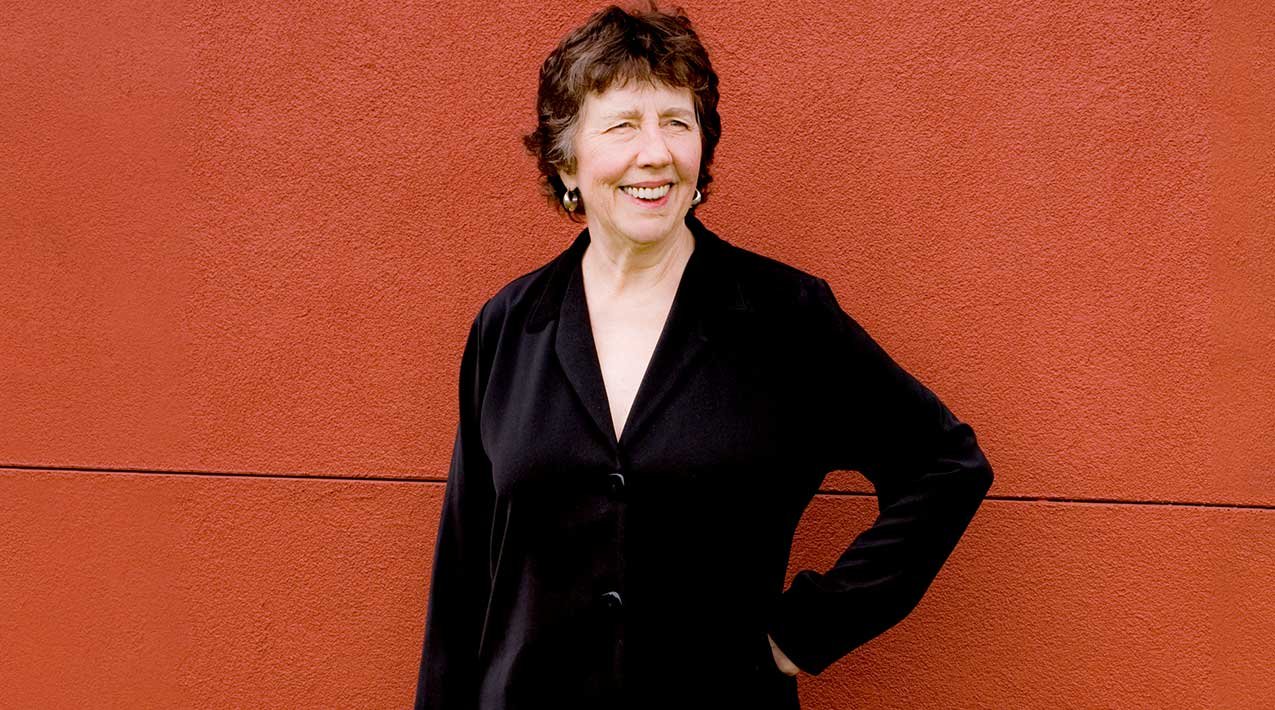For the Uncommon Woman
Notes by Michael-Thomas Foumai
JOAN TOWER (b. 1938)
For the Uncommon Woman (1992)
With a towering career spanning more than sixty years as a composer, conductor, and educator, Joan Tower is one of the most important living composers in the United States. Commissioned by major ensembles, soloists, and orchestras, her works have been performed by the Emerson, Tokyo, and Muir quartets; soloists Dame Evelyn Glennie, Carol Wincenc, David Shifrin, Paul Neubauer, and John Browning; and the orchestras of Chicago, New York, St. Louis, Pittsburgh, Baltimore, Nashville, Albany NY, and Washington DC among others. In 2019, the League of American Orchestras bestowed her with its highest honor, the Gold Baton.
Tower's musical language is rich with propulsive rhythmic vitality and edgy razor-like harmonies, giving perspective to a super-charged American soundscape. Composing the first "Fanfare for the Uncommon Woman" in 1986, Tower explains, "[It] was inspired by [Aaron] Copland's "Fanfare for the Common Man" and employs, in fact, the same instrumentation (four horns, three trumpets, three trombones, tuba, timpani, and percussion). In addition, the original theme resembles the first theme in the Copland. It is dedicated to women who take risks and who are adventurous." The first fanfare was dedicated to conductor Marin Alsop.
By 2016, Tower composed six fanfares with varying orchestration under variants of "Fanfare for the Uncommon Women." The second (1989) was dedicated to Joan Briccetti, then general manager of the Saint Louis Symphony Orchestra, and the third (1993) to Frances Richard, then Director of the Symphony and Concert Department at ASCAP. The fourth (1992), performed on this program, is the first in the series scored for orchestra and dedicated to conductor JoAnn Falletta. The fifth (1993) is dedicated to Joan Harris on the opening of Harris Concert Hall at the Aspen Music Festival. Politician Hillary Clinton is the dedicatee of the sixth and final fanfare (2016).
The 1992 fanfare was initially titled "Fourth Fanfare for the Uncommon Woman" but was re-named "For the Uncommon Woman." Scored for two flutes and piccolo, two oboes, two clarinets, two bassoons, four horns, three trumpets, three trombones, tuba, timpani, percussion, and strings, Tower unleashes the full might of the orchestra. From the start, the fire-brand and incisive orchestration are immediate. A singular-tone (D) rages to break free into something more, harmony. There is much symbolism in just the first few seconds of this 5-minute power surge. Musical gestures wedge out from a single tone into more extended and triumphant ideas, and the whole work rises towards an upward trajectory. Not all the music is celebratory; much of it is stark, but the sheer energy is visceral, a battle of expansion against rhythmic interruptions rallying against it. Tower uses mixed meters of 12/16 and 9/16 time to build momentum, pushing the tempo into fast forward. The beginning tone (D) return at the finale's end, with unshakable presence and might.


